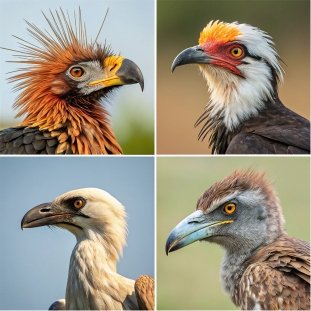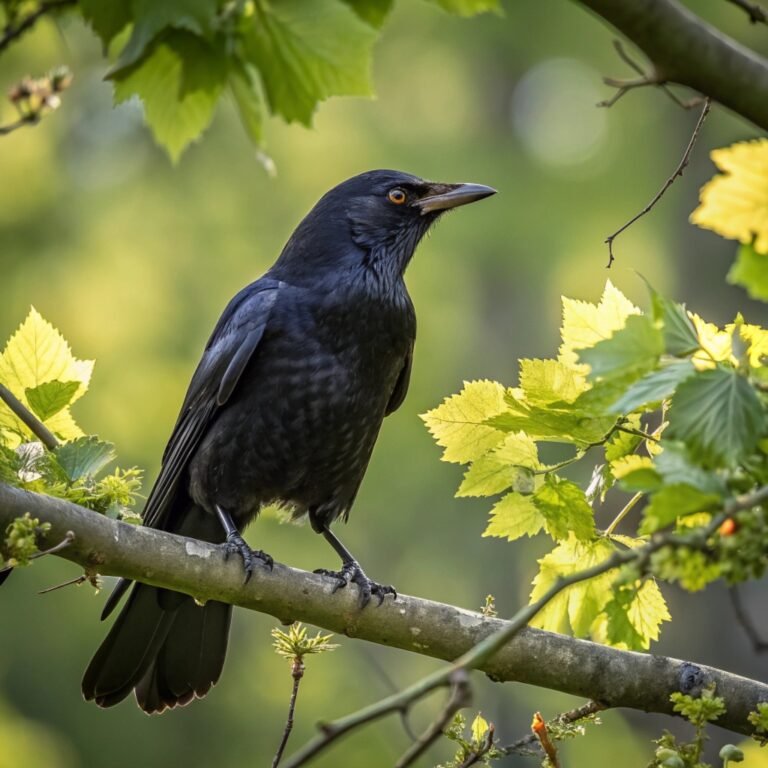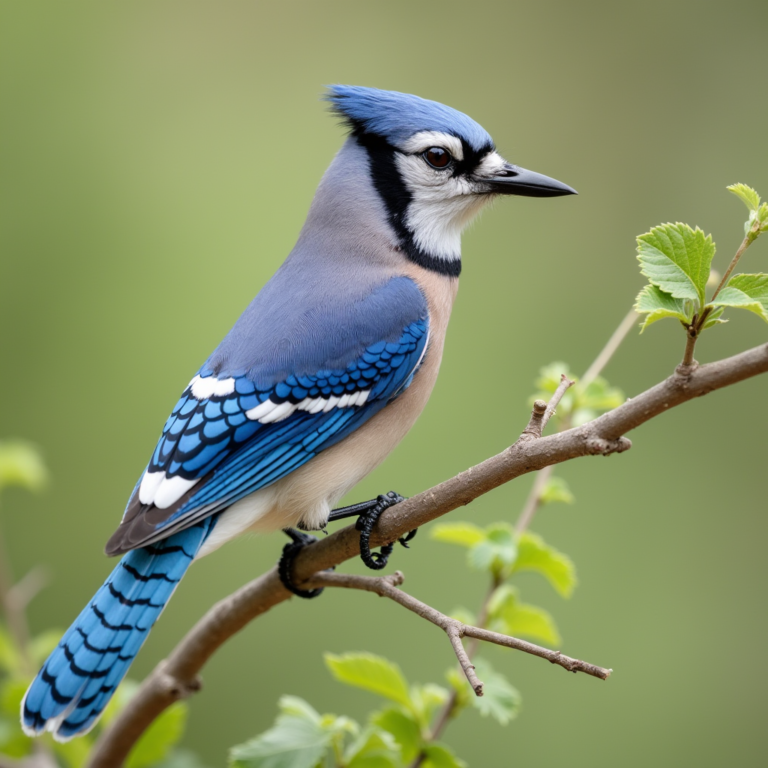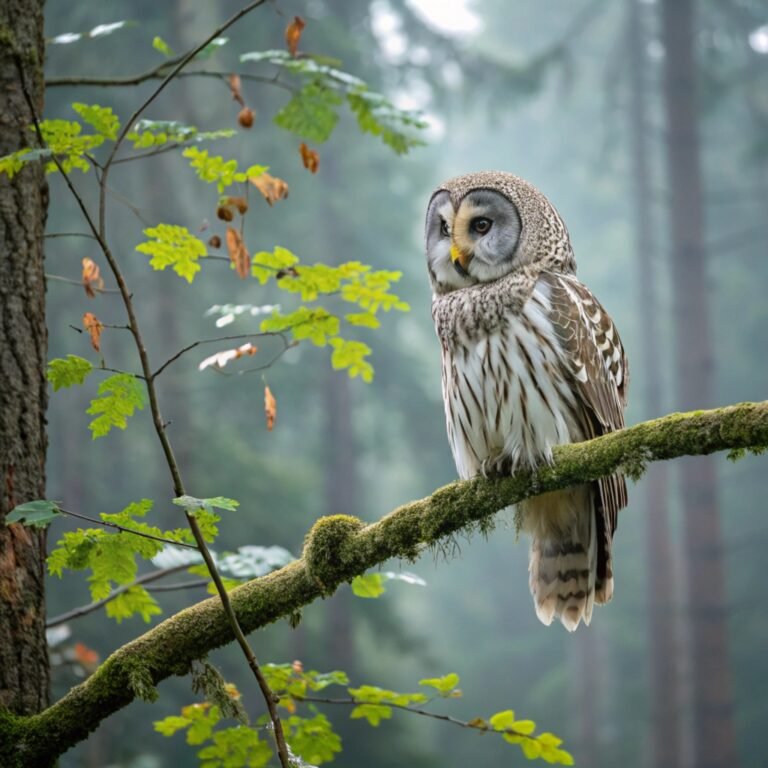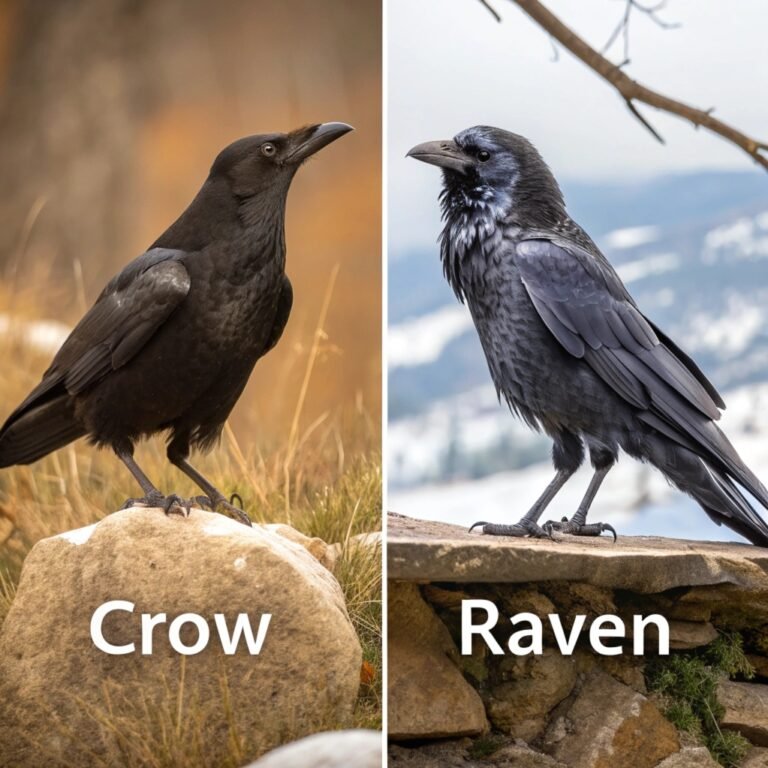10 Most Unusual-Looking Birds in Existence: Discover Nature’s Avian Oddities
The world of birds is filled with an astonishing array of Unusual colors, shapes, and sizes. While many birds are known for their beauty, some stand out for their peculiar appearances.
In this comprehensive guide, we’ll explore ten of the most unusual-looking birds in existence, delving into their unique features, habitats, and behaviors.
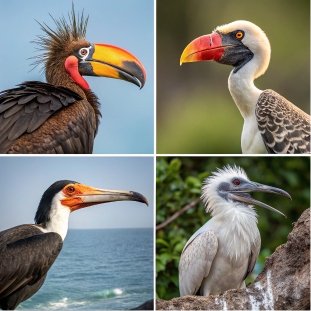
Key Takeaways:
- The avian world boasts an incredible diversity of unusual-looking species
- These birds have evolved unique features for survival and adaptation
- Many unusual birds face conservation challenges due to habitat loss
- Some species, like the Shoebill Stork, appear almost prehistoric in appearance
- Unusual appearances often serve specific purposes in mating or hunting
- Several of these birds are found in tropical or subtropical regions
- Some unusual birds, like the Kakapo, are flightless
- Conservation efforts are crucial for protecting these unique species
- Unusual appearances can sometimes lead to misconceptions about these birds
- Studying these birds provides valuable insights into avian evolution and adaptation
1. The Prehistoric-Looking Shoebill Stork: A Living Fossil of the Bird World
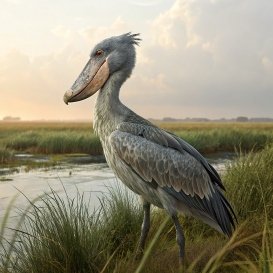
The Shoebill Stork (Balaeniceps rex) is undoubtedly one of the most unusual-looking birds in existence. With its massive, shoe-shaped bill and towering height of up to 1.2 meters, this bird appears to have stepped out of a prehistoric era.
Native to the swampy regions of East Africa, the Shoebill Stork’s unique appearance serves a vital purpose.
Its enormous bill, which can grow up to 23 cm in length, is perfectly adapted for catching and crushing its prey, including fish, frogs, and even small crocodiles.
The Shoebill’s patience is as remarkable as its appearance. These birds can stand motionless for hours, blending seamlessly into their wetland habitat while waiting for the perfect moment to strike.
Their unusual hunting technique and distinctive appearance make them one of the most sought-after sights for birdwatchers and nature enthusiasts alike.
2. The Flamboyant Cock-of-the-Rock: Nature’s Vibrant Performer
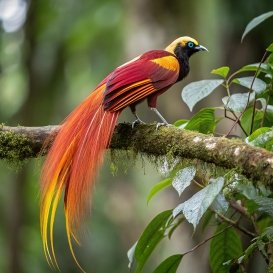
The Cock-of-the-Rock (Rupicola peruvianus) is a striking bird native to South America, known for its vibrant plumage and elaborate courtship displays.
The male of the species is particularly eye-catching, with a brilliant orange-red body and a distinctive fan-shaped crest on its head.
These unusual birds gather at dawn in communal leks, where males perform complex dances and vocal displays to attract females.
Their flamboyant appearance and behavior make them one of the most unique and captivating birds in the world.
The Cock-of-the-Rock’s unusual appearance serves a crucial role in its mating rituals. The brighter and more vibrant a male’s plumage, the more likely he is to attract a mate.
This species is a prime example of how unusual appearances in birds can be directly linked to evolutionary adaptations for reproductive success.
3. The Master of Disguise: The Great Potoo
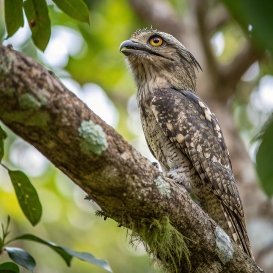
The Great Potoo (Nyctibius grandis) is a master of camouflage and one of the strangest-looking birds in existence.
Native to the jungles of Central and South America, this nocturnal bird spends its days perfectly still, mimicking a broken tree branch.
With its enormous eyes and wide, frog-like mouth, the Great Potoo has an almost comical appearance when seen up close. However, this unusual look serves a vital purpose in its survival strategy.
By day, the bird’s mottled brown plumage and unique posture allow it to blend seamlessly with its surroundings, avoiding detection by predators.
At night, the Great Potoo transforms into an efficient hunter, using its large eyes and wide mouth to catch flying insects and even small bats.
Its unusual appearance and behavior make it one of the most fascinating and elusive birds in the tropical forests it calls home.
4. The Enigmatic Kakapo: The Owl Parrot of New Zealand

The Kakapo (Strigops habroptilus) is a truly unique bird that defies easy categorization. Often called the “owl parrot,” this flightless bird is native to New Zealand and is one of the rarest birds in the world.
Weighing up to 4 kilograms and measuring around 60 cm in length, the Kakapo is the heaviest parrot species in the world.
Its unusual appearance includes a distinctive owl-like face, moss-green plumage, and a rotund body shape.
The Kakapo’s flightlessness and nocturnal habits make it a truly unusual parrot. Its unique features are adaptations to its historical predator-free environment in New Zealand.
However, these same traits have made it vulnerable to introduced predators, leading to its current critically endangered status.
5. The Vibrant South Philippine Dwarf Kingfisher: A Living Rainbow
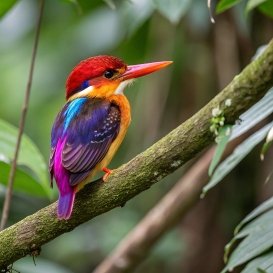
The South Philippine Dwarf Kingfisher (Ceyx melanurus) is a stunningly colorful bird that looks as if it has been painted by an artist’s brush.
This rare and elusive species is native to a small area of the Philippines and was photographed for the first time in 130 years in 2020.
With its kaleidoscope of metallic lilac, orange, and bright blue spots, this tiny kingfisher is a visual marvel.
Its vibrant plumage stands in stark contrast to its diminutive size, making it one of the most unusual and beautiful birds in existence.
The South Philippine Dwarf Kingfisher’s unique coloration serves as camouflage in its tropical forest habitat, where it blends in with the colorful flowers and fruits.
Its rarity and recent rediscovery make it a subject of great interest for conservationists and bird enthusiasts alike.
6. The Prehistoric Secretary Bird: Nature’s Snake Stomper
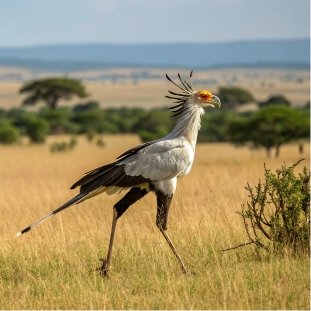
The Secretary Bird (Sagittarius serpentarius) is a truly unusual bird that seems to defy classification.
Standing over 4 feet tall, this bird of prey looks like a cross between an eagle and a crane, with its long legs and distinctive black crest feathers resembling quill pens.
Native to the grasslands and savannas of sub-Saharan Africa, the Secretary Bird is known for its unique hunting style. It uses its exceptionally long legs to stomp on prey, including snakes, earning it the nickname “snake stomper.”
The Secretary Bird’s unusual appearance serves a practical purpose. Its height allows it to see over tall grasses, while its long legs enable it to cover large distances in search of prey.
This remarkable bird is a testament to nature’s ability to create unique solutions for survival in challenging environments.
7. The Bizarre Hoatzin: The Prehistoric Stinkbird
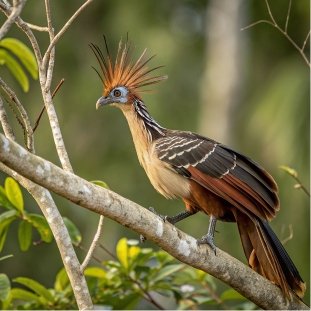
The Hoatzin (Opisthocomus hoazin) is often referred to as one of the most unusual birds in the world.
Native to the Amazon and Orinoco basins of South America, this bird is also known as the “stinkbird” due to its distinctive odor, which is caused by its unique digestive system.
The Hoatzin’s appearance is as unusual as its smell. With a spiky crest, blue face, and red eyes, it looks like a bird that time forgot. Young Hoatzins have claws on their wings, a feature reminiscent of the prehistoric Archaeopteryx.
This bird’s unique digestive system allows it to eat leaves that are toxic to other animals. The Hoatzin’s unusual features and behaviors make it a fascinating subject for scientists studying avian evolution and adaptation.
8. The Magnificent Frigatebird: The Pirate of the Skies
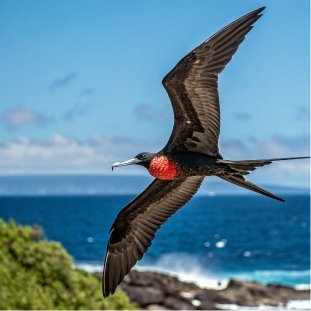
The Magnificent Frigatebird (Fregata magnificens) is a large seabird known for its impressive wingspan and unusual appearance.
With a wingspan that can reach up to 2.3 meters, this bird is a master of the skies, capable of staying aloft for days at a time.
What makes the Magnificent Frigatebird truly unusual is the male’s bright red throat pouch. During mating season, males inflate this pouch to attract females, creating a striking heart-shaped display against their black plumage.
These birds are also known as “pirate birds” due to their habit of stealing food from other seabirds. Their unique appearance and behavior make them one of the most fascinating birds to observe in tropical and subtropical regions.
9. The Enigmatic New Caledonian Owlet-Nightjar: A Living Mystery
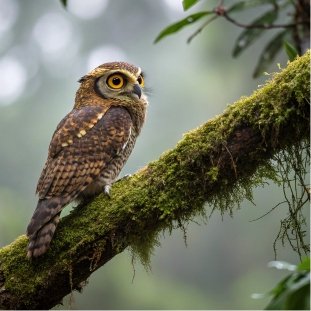
The New Caledonian Owlet-Nightjar (Aegotheles savesi) is one of the rarest and most mysterious birds in the world. Native to New Caledonia, this elusive species has only been seen a handful of times since its discovery in 1880.
Larger than its Australian relatives, the New Caledonian Owlet-Nightjar is shrouded in mystery. Its unusual appearance, with large eyes and a wide, frog-like mouth, is adapted for nocturnal hunting.
The rarity and elusiveness of this bird make it one of the most intriguing species for ornithologists.
Its continued existence in the face of habitat loss is a testament to its adaptability and the importance of conservation efforts in preserving such unique species.
10. The Striking Victoria Crowned Pigeon: Nature’s Royal Bird
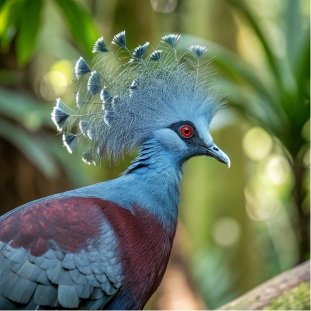
The Victoria Crowned Pigeon (Goura victoria) is the largest pigeon species in the world and one of the most unusual-looking birds in existence.
Native to the lowland forests of New Guinea, this bird is a sight to behold with its distinctive blue-gray plumage and elaborate lace-like crest.
Standing at nearly a meter tall, the Victoria Crowned Pigeon is far from the common city pigeon most people are familiar with. Its size and regal appearance have earned it the nickname “royal pigeon.”
The bird’s unusual crest serves both as a visual display for mating and as camouflage in its forest habitat.
Despite its impressive size, the Victoria Crowned Pigeon is a gentle bird, known for its soft cooing calls and graceful movements.
Frequently Asked Questions
Q1: Why do some birds have such unusual appearances?
Unusual appearances in birds often serve specific purposes related to survival, mating, or adaptation to their environment. For example, the Shoebill Stork’s large bill is perfect for catching prey, while the male Frigatebird’s red throat pouch is used to attract mates.
Q2: Are unusual-looking birds more endangered than other species?
Not necessarily, but many unusual birds face conservation challenges due to habitat loss or other human activities. Some, like the Kakapo and New Caledonian Owlet-Nightjar, are critically endangered.
Q3: Where can I see these unusual birds in their natural habitats?
Many of these birds can be found in tropical or subtropical regions. For example, the Shoebill Stork is found in East Africa, while the Hoatzin lives in South America. However, some, like the Kakapo, are only found in very specific locations.
Q4: Do unusual-looking birds have different behaviors than other birds?
Often, yes. Many unusual-looking birds have evolved unique behaviors along with their unique appearances. For instance, the Secretary Bird’s long legs allow it to stomp on prey, a behavior not seen in many other birds of prey.
Q5: How do scientists study these rare and unusual birds?
Scientists use a variety of methods to study unusual birds, including field observations, satellite tracking, and genetic analysis. For very rare species like the New Caledonian Owlet-Nightjar, even a single sighting can provide valuable information.

Hello, I’m Emily Price, the founder of Birds Affection. As a passionate bird enthusiast and spiritual seeker, I’ve always been fascinated by the symbolic meanings and mystical connections between birds and our lives. On this website, I share my knowledge and insights on the spiritual significance of various bird species, exploring their roles as messengers, guides, and teachers. Through my writing, I aim to inspire and educate others on the profound wisdom and beauty that birds bring to our world. Join me on this journey as we delve into the enchanting realm of bird symbolism and discover the hidden meanings behind these magnificent creatures.

